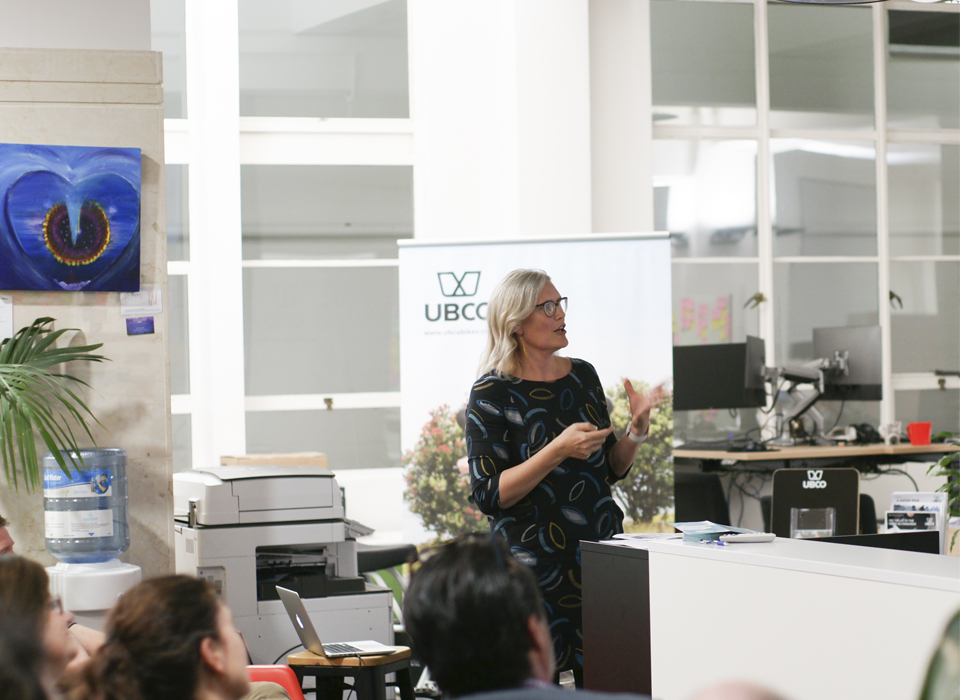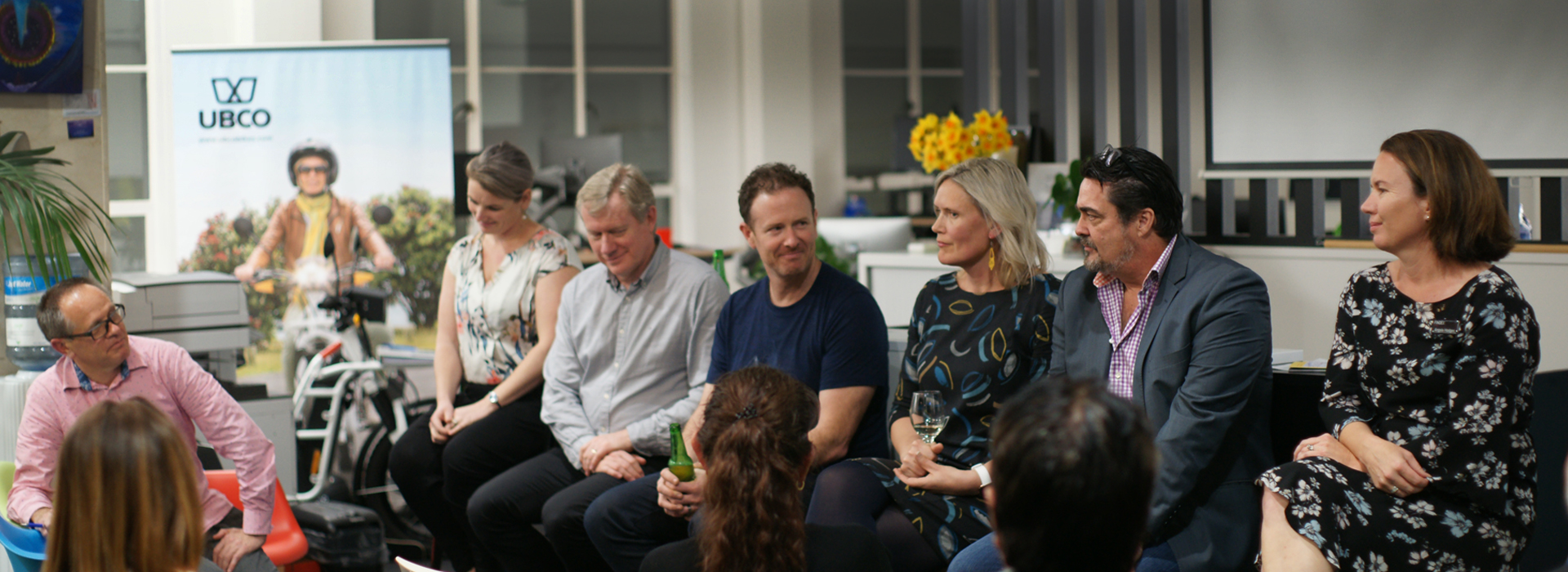What is the Future of R&D?
When it comes to investing time and money on R&D, you need passion and commitment. You need a fire in your belly and a propensity for risk-taking.
But, we all need that, right?
The only difference – if your business does a lot of R&D, you need that passion and commitment in spades. Big spades!
That’s a trait all the speakers shared at the ‘What is the future of R&D’ event, part of Groundswell Festival of Innovation 2019. We heard the inside story and got some personal insights from these R&D leaders (as well as sharing our knowledge about the new R&D tax incentive).

Dr Matt Glenn, CEO – Robotics Plus
For Robotics Plus, it’s all about speed. “Hold on tight” is how Matt described their journey to date. The team at Robotics Plus develop and export robotic fruit packing, log scaling and unmanned ground vehicles (UGV). This young and hungry team with an average age of 27 has 6 PhDs, 6 MSc and 43 Degrees between them. And they’re on a mission – they’ve grown from 15 to 50 in 12 months.
We learnt from Matt that one of their secrets to success is partnerships. Finding the right people to work with around the world. Sourcing the best tech and applying it to solve specific problems. They think of themselves as “integrators of tech”.
What’s the end goal of their innovation? “To get humans away from Dirty, Dark and Dangerous activities.” A simple statement that makes it easy for them to identify opportunities and stay on track with their development projects.
Having a purpose behind innovation is also one of the secrets of agri-tech electronic instrument company Bluelab’s success.
Greg Jarvis, CEO – Bluelab
The unifying purpose for the team at Bluelab is “to equip growers with the freedom to pioneer”. Customer empathy is what drives their design process. In fact, it runs through the entire business. The first photo Greg shared, showed a staff member and customer. He explained how important it is that staff understand their customers deeply – and how it pays to look and talk like them too!
Greg gave a couple of great pieces of advice. Hold off on any significant investments on tools, equipment etc. as long as you can. Until you have certainty on where you’ll land. Because when you’re developing new products things change at pace. You don’t want to lock yourself into anything too early in the process.
He also told us that product development should be based on research and understanding, not the intuition or whims of the CEO. One advantage for Bluelab is being right among the agritech sector here in the BOP with easy access to innovative local customers. However, as an exporter, spending time in market is equally important, especially in markets where growing methods are very different.
Another advocate for research-based understanding is Locus Research founder, Timothy Allan, now CEO of UBCO Bikes.

Timothy Allan, CEO – UBCO Bikes
Much like Robotics Plus, UBCO is all about speed. In the rapidly evolving EV space, they have found their niche and are pulling out all stops to grow their distribution in key export markets.
While the focus is growing sales around the world, the business has not lost site of the need to constantly evolve their product offering. R&D is still very much front and centre. In order to work at pace UBCO’s approach is to search out the best partners to collaborate with around the world. For example, their next product requires a new 4X4 chassis design. The team could work on that here, but instead they’ve chosen to find a specialist chassis designer. He’ll do it faster, and the team can focus on other elements of the design in parallel.
This outsourcing approach is also shared by Zespri.
Dr Juliet Ansell, Innovation Manager – Zespri International
Zespri currently outsources their R&D, working with specialised scientists and institutions around the world. This approach may change at some point in the future, but for now it gives them access to the best international knowledge.
Juliet is somewhat of an international herself. Originally from the UK, she’s lived and worked all over the world. She’s had a deep passion for science since childhood (despite growing up in a family of artists). As a parasitologist Juliet found seeing her own Malaria parasites down a microscope in Africa very exciting (although feeling like death warmed up at the time).
One of Juliet’s key insights was the importance of the R&D team having a common direction and purpose. Quite a challenge with a distributed team. She also believes in a culture of admitting mistakes. That’s how we learn. And if you’re not making mistakes, maybe you’re not pushing the boundaries.

All this great innovation needs a tax break!
The Research and Development Tax Incentive is one of the most significant changes for New Zealand businesses in recent times. The new incentive provides a 15% tax credit on R&D spend. To qualify the minimum R&D expenditure is $50,000 but if you work with an Approved Research Provider (like us) the minimum threshold doesn’t apply.
The incentive is just one of the tools available for R&D funding. Kirstin Mead from Callaghan Innovation gave a great overview of the funding landscape. And Angela Hodges from Findex provided an interesting transactional view of the incentive itself.
One major change that this R&D Tax Incentive makes is that it redefines what R&D activities are. A core R&D activity must have the purpose of creating new knowledge, or new and improved processes, services and goods. It must also use a systematic approach which has the purpose of resolving scientific or technological uncertainty.
In a nutshell, if your business can show they’re exploring new ground, using a systematic approach, then your R&D activity should qualify for the rebate.
Now, if there’s one thing we’ve learned about product development and R&D over the years it’s that you don’t know what you don’t know. And this was exemplified by all speakers at our event.
In fact, change is the only constant. That’s why we use a framework not a process to guide our R&D projects. And we think the new incentive is a better reflection of this reality. Provided a systematic approach is in place, your activities are eligible, regardless of whether you’ve had to pivot on your project when new knowledge is gained. Because let’s face it. Anyone who does a lot of R&D, knows it’s not always plain sailing. When you’re exploring new ground there will be surprises. The only thing you can do is plan for the unexpected and manage your risks.
And that requires passion and commitment.
Keen for the complete re-run? Here is the Future of R&D presentation


Comments